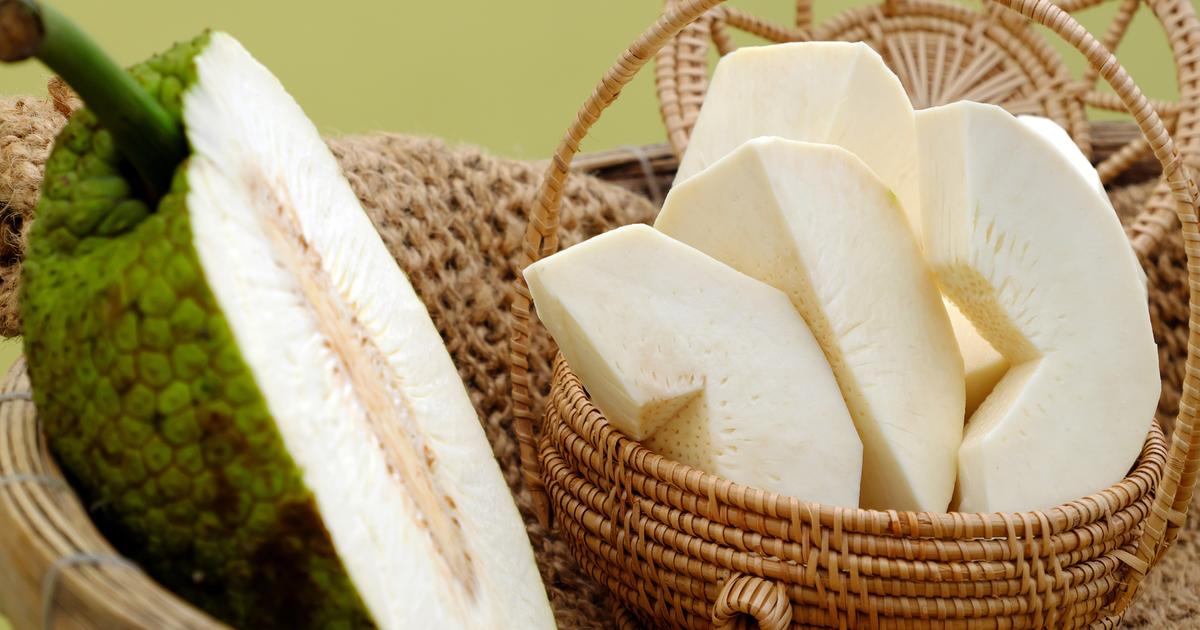Breadfruit
There are many breadfruit trees on Reunion Island. Recognizable by its odd shape and its rough skin punctuated with small pimples, the fruit of this imposing tree sometimes exceeds 2 kg. With its floury texture and slight chestnut taste, it could be reminiscent of potatoes. It is not eaten raw but only steamed, baked, sautéed in strips or dice, gratin, puree, or even fried then simmered in a curry with meat. Some prefer it sweet, made into jam or fritters.
Badame nuts
Taking on shades of yellow then red when it reaches maturity, it is a fruit with pulpy and edible flesh, with a pit where the almond is housed. Eko - stock.adobe.com
Nicknamed “tropical almond”, the badame nut grows on the badamier tree, a tree native to New Guinea then imported to Madagascar in the 17th century, which has become inseparable from the landscape of Reunion where it provides a shaded area on the main squares of towns . Taking on shades of yellow then red when it reaches maturity, it is a fruit with pulpy and edible flesh, with a pit where the almond is housed. It was once popular, eaten on the go, barely picked from the tree. Today, only the old people still seem to enjoy it.
Pet
paulovilela - stock.adobe.com
Better known as chayote, or christophine in the West Indies, the chouchou is a close cousin of the zucchini. It is a fleshy and slightly crooked fruit that is eaten raw or cooked. The people of Reunion Island cook its pulp in stews, gratin, soups, salads, stuffed with meat, cakes and jams. They prepare its tender young shoots sautéed in a wok or simmered in broth. The dried stems are even braided by artisans to make slippers, hats and bags.
Brèdes
The word “brèdes” brings together all the leaves and tender edible stems of certain plants often picked in the wild. Unclesam - stock.adobe.com
In Reunion, the word “brèdes” brings together all the tender edible leaves and stems of certain plants often picked in the wild, in the garden or at the side of a path. Among them, we find chouchou or pumpkin vines, watercress, radish or turnip leaves, “brèdes médailles”, “brèdes choux de chine” or even “brèdes lastrons”, three varieties of vegetables typical leaves of the island. All are mostly prepared as fricassee with garlic, ginger and sometimes combawa and are served as accompaniments to traditional dishes.
Tamarind
Tamarind is present in all the island's markets, often prepared in syrup, artisanal sweets, jam and fresh juice. michel BORDIEU - stock.adobe.com
The tamarind tree, native to Africa, produces a fruit in the shape of a brown pod containing a dense, pasty pulp, both tangy and astringent and can be enjoyed raw (with a little sugar), dehydrated, candied or under dough form. Tamarind is present in all the island's markets, often prepared in syrup, artisanal sweets, jam and fresh juice. The Reunionese also use it to give a tangy flavor to certain preparations.
LISTEN - First
aid kit: the complete guide to make sure you don't forget anything

